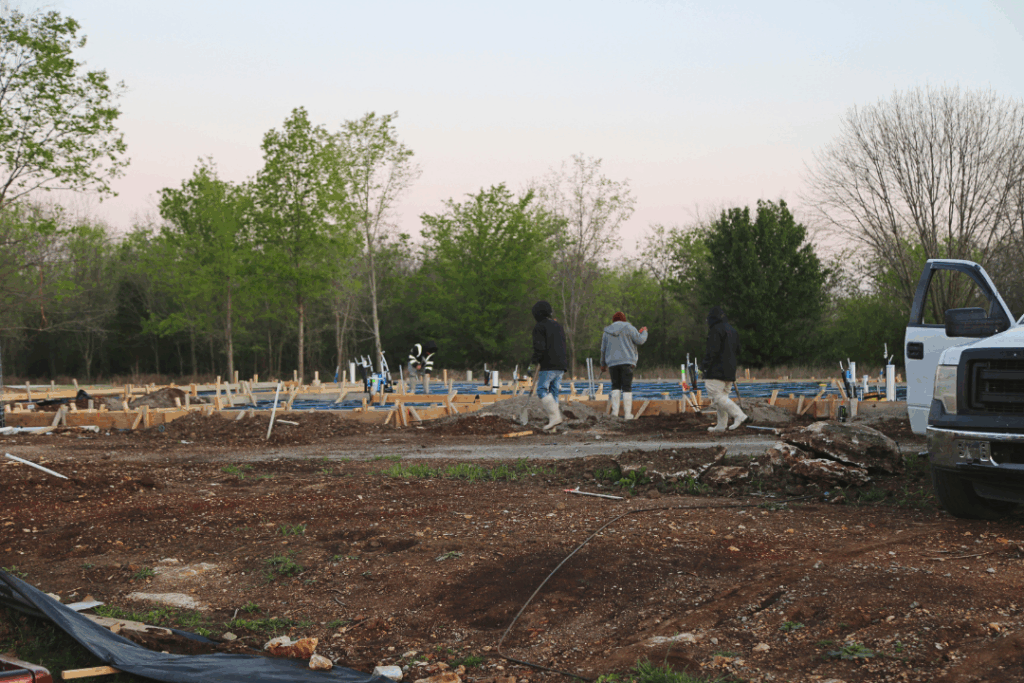
How Drainage and Soil Conditions Affect Concrete Foundations
A strong foundation starts with more than just concrete—it starts with what’s beneath it. At IC Solutions, we’ve poured countless large-scale concrete foundations, and if there’s one thing we’ve learned, it’s this: what lies below matters just as much as what you build on top. When homeowners or builders overlook the soil and drainage impact on concrete, they risk major issues down the road, from cracking and shifting to full structural failure. Let’s explore how soil and drainage affect your foundation’s performance and why proper evaluation is critical before the first pour.
Why Soil Conditions Matter More Than You Think
Soil isn’t just dirt. It’s a living, changing foundation that reacts to weather, moisture, and pressure. The type of soil under your concrete directly affects its ability to remain stable and support the weight of a home or structure.
Here’s how different soil types can affect your foundation:
- Clay soil: Expands when wet and contracts when dry, leading to movement beneath the slab
- Sandy soil: Drains well but may not compact tightly, increasing the risk of settlement
- Silty soil: Retains water, causing pressure buildup that can crack or shift the concrete
- Rocky or well-compacted soil: Offers excellent support and minimal movement
At IC Solutions, we always begin with a professional soil evaluation. We look at composition, moisture retention, compaction levels, and load-bearing capacity. If the existing soil isn’t ideal, we’ll bring in engineered fill or modify the site to ensure long-term stability.
Drainage: The Silent Foundation Killer
Even if your soil is solid, poor drainage can ruin a perfectly poured foundation. Water buildup around or beneath the slab creates hydrostatic pressure, which can lead to cracking, moisture intrusion, or slab movement. Over time, this weakens the structural integrity of the foundation and invites long-term damage.
Here’s what poor drainage can cause:
- Heaving or lifting of the slab as wet soil expands
- Settling or sinking as water washes away fine particles beneath the slab
- Cracks from uneven moisture levels across the foundation
- Mold and mildew in basements or crawl spaces due to seepage
That’s why we emphasize evaluating and correcting drainage systems as part of every foundation project. You can’t afford to pour on a site that doesn’t drain properly.
How IC Solutions Evaluates Soil and Drainage
Understanding the soil and drainage impact on concrete begins with a detailed site assessment. Before we even think about setting forms, we take steps to ensure the ground is ready for the load it’s about to carry.
Here’s how we do it:
- Soil testing: We assess compaction, moisture content, and stability
- Topography analysis: We evaluate how water flows across the site
- Drainage planning: We design slopes, swales, and perimeter drains to divert water
- Subgrade preparation: We remove unsuitable soil and compact the base for consistency
- Use of barriers and backfill: We add gravel layers or vapor barriers to reduce moisture intrusion
These steps aren’t optional—they’re essential. Skipping them can turn a great concrete pour into a foundation nightmare.
What You Can Do to Protect Your Foundation
Even after a concrete foundation is poured, ongoing site conditions continue to play a role. Here are some proactive steps property owners can take to protect their investment:
- Ensure gutters and downspouts direct water away from the foundation
- Grade the surrounding landscape to slope away from the home
- Avoid planting trees or shrubs too close to the foundation, as roots can disrupt soil balance
- Inspect and maintain drainage systems regularly, especially after storms
- Watch for signs of water pooling or changes in soil around the perimeter
Ongoing awareness of the soil and drainage impact on concrete can save thousands in future repair costs.
Real-World Consequences of Ignoring Soil and Drainage
We’ve seen projects where skipping proper soil evaluation led to uneven settling just months after the pour. We’ve also repaired slabs cracked by water buildup because there was no drainage plan in place. These aren’t rare cases—they’re what happens when shortcuts are taken.
The cost of a soil test or drainage improvement is nothing compared to the cost of foundation repair or replacement. That’s why IC Solutions includes this analysis as a core part of every job. We don’t guess—we investigate and engineer the right solution.
Build Smarter from Below the Surface
The success of a concrete foundation isn’t just about how it looks when it’s done—it’s about how it performs for the next 30, 50, or even 100 years. That kind of durability begins long before the concrete truck arrives. It starts with understanding the soil and drainage impact on concrete, and it ends with a foundation that stands firm through seasons, storms, and soil shifts.
At IC Solutions, we bring decades of experience to every pour, ensuring that your foundation is built on solid ground—literally. Ready to get started on a site that’s engineered for lasting performance?
Contact IC Solutions today to schedule a site evaluation and take the first step toward a foundation that’s strong from the soil up.
